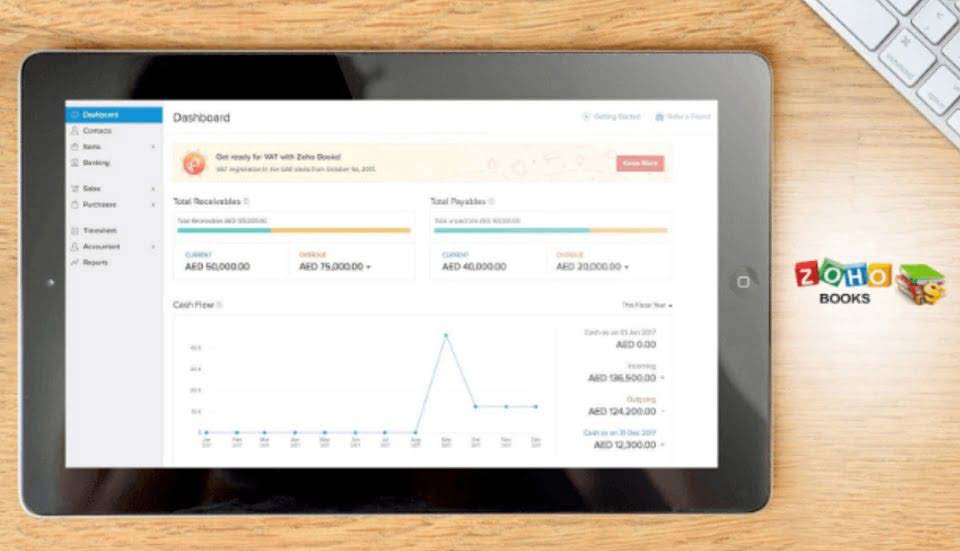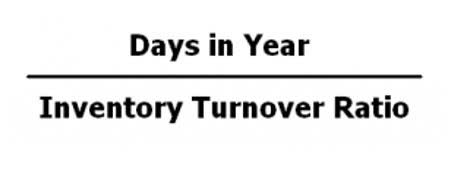Additionally, reviewing and adjusting pricing strategies can ensure that the company is generating maximum revenue from its assets. The asset turnover ratios for these two retail companies provide for a straight-across comparison of their performance. As an example of how the asset turnover ratio is applied, consider the net sales and total assets of two fictional retail companies.
What is asset turnover? And how to calculate asset turnover ratio
Negative asset turnover indicates that a company’s sales are less than its average total assets. This is a rare scenario and typically indicates serious operational issues or accounting errors. Generally, a higher ratio is better, indicating that a company efficiently utilizes its assets to generate revenue. However, what constitutes a “good” ratio depends on factors like industry norms, company size, and specific business strategies. The asset turnover ratio assesses a company’s efficiency in using assets for sales generation, while return on assets (ROA) gauges its efficiency in generating profits with assets. ATR focuses on operational efficiency, whereas ROA encompasses both operational efficiency and profitability.
How is the asset turnover ratio calculated?
Also, keep in mind that a high ratio is beneficial for a business with a low-profit margin as it means the company is generating sufficient sales volume. Conversely, a high asset turnover ratio may be less significant for businesses with high-profit margins, as they make substantial profits on each sale. It is important to note that the Asset Turnover Ratio can vary significantly between industries. For example, a manufacturing company may have a lower Asset Turnover Ratio compared to a service-based company due to the nature of their operations. Additionally, a high Asset Turnover Ratio does not necessarily mean that a company is profitable, as it does not take into account expenses and other financial factors.
What Is the Main Downside to the Fixed Asset Turnover Ratio?
It is likewise useful in analyzing a company’s growth to see if they are augmenting sales in proportion to their asset bases. To that end, it’s a good idea to compare your asset turnover ratio with averages for your industry to get the most accurate picture of your business’s performance. Keep in mind that the average asset turnover ratio tends to be higher for businesses in some industries than in others. In conclusion, understanding and analyzing Asset Turnover Ratio is essential for measuring and improving business efficiency and profitability. By tracking this ratio and implementing strategies to improve it, businesses can optimize their use of assets and generate maximum revenue.
We and our partners process data to provide:
Ratio comparisons across markedly different industries do not provide a good insight into how well a company is doing. For example, it would be incorrect to compare the ratios of Company A to that of Company C, as they operate in different industries. Yarilet Perez is xero accounting software review 2020 an experienced multimedia journalist and fact-checker with a Master of Science in Journalism. She has worked in multiple cities covering breaking news, politics, education, and more. Asset turnover can be calculated quarterly, annually, or over any desired period.
It is an asset-utilization ratio which tells us how efficiently the company is using its assets to generate revenue. The formula’s components (net sales and total assets) can be found in a company’s financial statements. To determine the value of net sales for the year, look to the company’s income statement for total sales.
- On the other hand, a low asset turnover ratio could indicate inefficiency in using assets, suggesting problems with the company’s inventory management, sales generation, or asset acquisition strategies.
- In all cases the numerator is the same i.e. net sales (both cash and credit) but denominator is average total assets, average fixed assets, and average working capital, respectively.
- The Asset Turnover Ratio is a crucial financial indicator that allows businesses and investors to assess a company’s efficiency in using its assets to generate sales.
- All of these categories should be closely managed to improve the asset turnover ratio.
It’s important to note that comparisons of asset turnover ratios are only meaningful for evaluating companies in the same sector or industry. Some sectors, such as retail and consumer staples, tend to have smaller asset bases with high sales volume, resulting in higher ratios because they need to replace their inventories at a high rate each year. To get a true sense of how well a company’s assets are being used, it must be compared to other companies in its industry. The total asset turnover ratio calculates net sales as a percentage of assets to show how many sales are generated from each dollar of company assets.
As with any financial metric, it’s essential to use the ratio in conjunction with other measures and not to rely solely on it to evaluate a company’s financial health or efficiency. It’s crucial to be consistent with the time periods for both net sales and total assets when calculating this ratio. If you’re looking at net sales for the year, make sure to use the total assets at the start and end of the same year to calculate the average. This is especially true for manufacturing businesses that utilize big machines and facilities.
Another important factor to consider when comparing Asset Turnover Ratios is the size of the company. It’s important to take this into account when comparing ratios between companies of different sizes. When comparing Asset Turnover Ratios across competitors, it’s important to consider factors such as different operational models and accounting methods. It’s best practice to compare ratios within the same industry, as industries with different characteristics will naturally have different ratios. Additionally, comparing ratios over time, such as quarter over quarter or year over year, can provide insight into trends and help identify areas where improvements can be made.
Also, pinpoint areas of operational efficiency or inefficiency, and make informed decisions. Fixed Asset Turnover (FAT) is an efficiency ratio that indicates how well or efficiently a business uses fixed assets to generate sales. This ratio divides net sales by net fixed assets, calculated over an annual period. That said, a higher ratio typically indicates that the company is more efficient in using its assets to generate sales. Companies with low profit margins tend to have high asset turnover ratios, while those with high profit margins usually have lower ratios.
To improve a low ATR, a company can take measures like stocking popular items, restocking inventory when needed, and extending operating hours to attract more customers and boost sales. This indicates that for every dollar of assets it owns, Company A generates $4 in sales. To illustrate how the asset turnover ratio works, let’s consider two hypothetical companies – Company A and Company B. Remember that this ratio is typically used to compare companies within the same industry, as different industries have different capital requirements and business models.
In addition, there are differences in the cashflow between when net sales are collected and when fixed assets are invested in. Manufacturing companies often favor the fixed asset turnover ratio over the asset turnover ratio because they want to get the best sense in how their capital investments are performing. Companies with fewer fixed assets such as a retailer may be less interested in the FAT compared to how other assets such as inventory are being utilized.
A higher asset turnover ratio suggests that a company is effectively utilizing its assets to generate sales revenue. On the other hand, a low asset turnover ratio could indicate inefficiency in using assets, suggesting problems with the company’s inventory management, sales generation, or asset acquisition strategies. It could also mean that the company is asset-heavy and may not be generating adequate revenue relative to the assets it owns. For example, the retail and grocery industries typically have relatively small asset bases but a high sales volume, meaning they have a high average asset turnover ratio. On the other hand, industries with significant assets, such as real estate and utilities, tend to have a low asset turnover rate. It is important to note that Asset Turnover Ratio should not be used in isolation when making investment decisions.
On the other hand, Telecommunications, Media & Technology (TMT) may have a low total asset turnover due to their high asset base. Thus, it is important to compare the total asset turnover against a company’s peers. While the asset turnover ratio should be used to compare stocks that are similar, the metric does not provide all of the detail that would be helpful for stock analysis.
A company with a high asset turnover ratio operates more efficiently as compared to competitors with a lower ratio. A higher fixed asset turnover ratio indicates that a company has effectively used investments in fixed assets to generate sales. Asset Turnover Ratio is a fundamental metric that plays a crucial role in assessing a company’s operational efficiency and overall financial health. It measures how effectively a company utilizes its assets to generate sales revenue. To obtain a comprehensive analysis of a company’s financial performance, it is advisable to consider other financial ratios in conjunction with the asset turnover ratio.
For instance, a ratio of 1 means that the net sales of a company equals the average total assets for the year. In other words, the company is generating 1 dollar of sales for every dollar invested in assets. Industries with low profit margins tend to generate a higher ratio and capital-intensive industries tend to report a lower ratio. For example, retail companies have high sales and low assets, hence will have a high total asset turnover.
It is important to note that a high Asset Turnover Ratio does not always indicate a positive financial performance. A high ratio could mean that the company is selling its assets quickly, but it could also mean that the company is not investing enough in its assets to generate revenue. Therefore, it is crucial to analyze the ratio in conjunction with other financial metrics to gain a comprehensive understanding of the company’s financial health. Among the more important considerations for investors when evaluating a company is how efficiently it utilizes its assets to produce revenue. These companies have greater potential to grow and compound their earnings over time.
The asset turnover ratio gauges a company’s asset efficiency in generating revenue, comparing sales to total assets annually. A variation, the Fixed Asset Turnover (FAT) ratio, considers only a company’s fixed assets. The asset turnover ratio helps investors understand how effectively companies are using their assets to generate sales. Investors use this ratio to compare similar companies in the same sector or group to determine who’s getting the most out of their assets. The asset turnover ratio is calculated by dividing net sales or revenue by the average total assets.
Thus, a sustainable balance must be struck between being efficient while also spending enough to be at the forefront of any new industry shifts. Over time, positive increases in the turnover ratio can serve as an indication that a company is gradually expanding into its capacity as it matures (and the reverse for decreases across time). Adam Hayes, Ph.D., CFA, is a financial writer with 15+ years Wall Street experience as a derivatives trader.
The fixed asset turnover ratio (FAT) is, in general, used by analysts to measure operating performance. While the fixed asset ratio is also an efficiency measure of a company’s operating performance, it is more widely used in manufacturing companies that rely heavily on plants and equipment. As with the asset turnover ratio, the fixed asset turnover ratio measures operational efficiency, but it is less likely to fluctuate because the value of fixed assets tends to be more static. Companies with a high fixed asset ratio tend to be well-managed companies that are more effective at utilizing their investments in fixed assets to produce sales. The asset turnover ratio measures the efficiency of a company’s assets in generating revenue or sales.
It serves as an indicator of the company’s operational efficiency and can be particularly telling in comparison with competitors within the same industry. On the other hand, industries such as real estate and utilities tend to have lower Asset Turnover Ratios. Real estate companies may hold onto properties for long periods of time before selling, while utilities require significant infrastructure investments that may not generate revenue for several years. Understanding the Asset Turnover Ratio for a particular industry can provide valuable insights into a company’s financial health and operational efficiency. It is important to note that a high asset turnover ratio does not necessarily indicate a company’s profitability. A company may have a high asset turnover ratio but still have low profit margins.
Generally, a higher ratio is favored because it implies that the company is efficient in generating sales or revenues from its asset base. A lower ratio indicates that a company is not using its assets efficiently and may have internal problems. A system that began being used during the 1920s to evaluate divisional performance across a corporation, DuPont analysis calculates a company’s return on equity (ROE). Companies can artificially inflate their asset turnover ratio by selling off assets. This improves the company’s asset turnover ratio in the short term as revenue (the numerator) increases as the company’s assets (the denominator) decrease. The asset turnover ratio calculation can be modified to omit these uncommon revenue occurrences.
On the flip side, a turnover ratio far exceeding the industry norm could be an indication that the company should be spending more and might be falling behind in terms of development. Over 1.8 million professionals use CFI to learn accounting, financial analysis, modeling and more. Start with a free account to explore 20+ always-free courses and hundreds of finance templates and cheat sheets. Thomas J Catalano is a CFP and Registered Investment Adviser with the state of South Carolina, where he launched his own financial advisory firm in 2018.
As at 1 January 20X1, Gamma had total assets of $100, total fixed assets of $60 and net working capital of $20. During FY 20X1 it generated sales of $200 with COGS of $160 and its total assets as at 30 December 20X1 were $120. During the year it charged depreciation of $10 and there were no fixed asset additions during the year. Calculate total asset turnover, fixed asset turnover and working capital turnover ratios.
This implies that for every dollar in assets, Company B generates $2.5 in sales. Investors who are looking for investment opportunities in an industry with capital-intensive businesses may find FAT useful in evaluating and measuring the return on money invested. Business assets tend to make up a large part of your working capital and ideally should help your business be as productive as possible. Another effective way to improve your business’s Asset Turnover Ratio is to focus on customer retention. By retaining existing customers, you can reduce the cost of acquiring new ones and increase the frequency of purchases. This can be achieved by providing excellent customer service, offering loyalty programs, and regularly engaging with customers through email marketing or social media.
It compares the dollar amount of sales (revenues) to its total assets as an annualized percentage. Thus, to calculate the asset turnover ratio, divide net sales or revenue by the average total assets. One variation on this metric considers only a company’s fixed assets (the FAT ratio) instead of total assets.
A good asset turnover ratio varies by industry, but a higher ratio is generally better. However, another factor for companies operating in the same industry is that sometimes a company with older assets will have higher asset turnover ratios since the accumulated depreciation would be more. Hence, while comparing asset turnover ratios for companies operating in the same industry, we should also consider this factor. As an example, consider the difference between an internet company and a manufacturing company. An internet company, such as Meta (formerly Facebook), has a significantly smaller fixed asset base than a manufacturing giant, such as Caterpillar. Clearly, in this example, Caterpillar’s fixed asset turnover ratio is of more relevance and should hold more weight than Meta’s FAT ratio.
Although a company’s total revenue may be increasing, the asset turnover ratio can identify whether that company is becoming more or less efficient at using its assets effectively to generate profits. The asset turnover ratio is a financial metric that measures how efficiently a company uses its assets to generate sales revenue. Several factors can influence a company’s asset turnover ratio, which represents how efficiently a company uses its assets to generate sales. These factors can broadly be grouped into operational efficiency, industry norms, investment in assets, and the company’s sales strategy.
Understanding the average ratios for a particular industry can help businesses identify areas where they may be falling behind or excelling in comparison to their competitors. This information can be used to inform strategic decisions and improve overall business performance. A high Asset Turnover Ratio indicates that a company is generating a significant amount of revenue for every dollar invested in assets, which is an indicator of efficiency. On the other hand, a low Asset Turnover Ratio indicates that a company may be underutilizing its assets and could benefit from improving its operations to generate more revenue. Average total assets value is calculated by adding the beginning and ending balance of total assets and dividing the sum by 2.
This ratio is useful because it allows you to compare companies in similar industries when they are using different accounting methods (e.g., the LIFO method for determining inventory value, or Depreciation). Companies with fewer assets on their balance sheet (e.g., software companies) tend to have higher ratios than companies with business models that require significant spending on assets. The asset turnover ratio is most helpful when compared to that of industry peers and tracking how the ratio has trended over time. Irrespective of whether the total or fixed variation is used, the asset turnover ratio is not practical as a standalone metric without a point of reference.
It can be used to compare how a company is performing compared to its competitors, the rest of the industry, or its past performance. The DuPont Analysis calculates the Return on Equity of a firm and uses profit margin, asset turnover ratio, and financial leverage to calculate RoE. Like other financial ratios, the fixed ratio turnover ratio is only useful as a comparative tool. For instance, a company will gain the most insight when the fixed asset ratio is compared over time to see the trend of how the company is doing. Alternatively, a company can gain insight into their competitors by evaluating how their fixed asset ratio compares to others. The ratio is commonly used as a metric in manufacturing industries that make substantial purchases of PP&E in order to increase output.
Asset turnover is a measure of how efficiently your business uses its assets to generate sales. Your asset turnover ratio is how much income you earn based on the total assets you have. It is important to note that Asset Turnover Ratio can vary significantly between industries. For example, a manufacturing company may have a lower Asset Turnover Ratio compared to a service-based https://www.bookkeeping-reviews.com/ company, as manufacturing requires more capital-intensive assets. Therefore, it is crucial to compare a company’s Asset Turnover Ratio with its industry peers to gain a better understanding of its efficiency. Additionally, Asset Turnover Ratio should be analyzed in conjunction with other financial ratios to get a comprehensive view of a company’s financial health.
The asset turnover ratio uses total assets instead of focusing only on fixed assets as done in the FAT ratio. Using total assets acts as an indicator of a number of management’s decisions on capital expenditures and other assets. Once you have these figures, you divide net sales by the average total assets to get the asset turnover ratio. The result tells you how many times a company turned its assets into sales during the period. The net fixed assets include the amount of property, plant, and equipment, less the accumulated depreciation.




